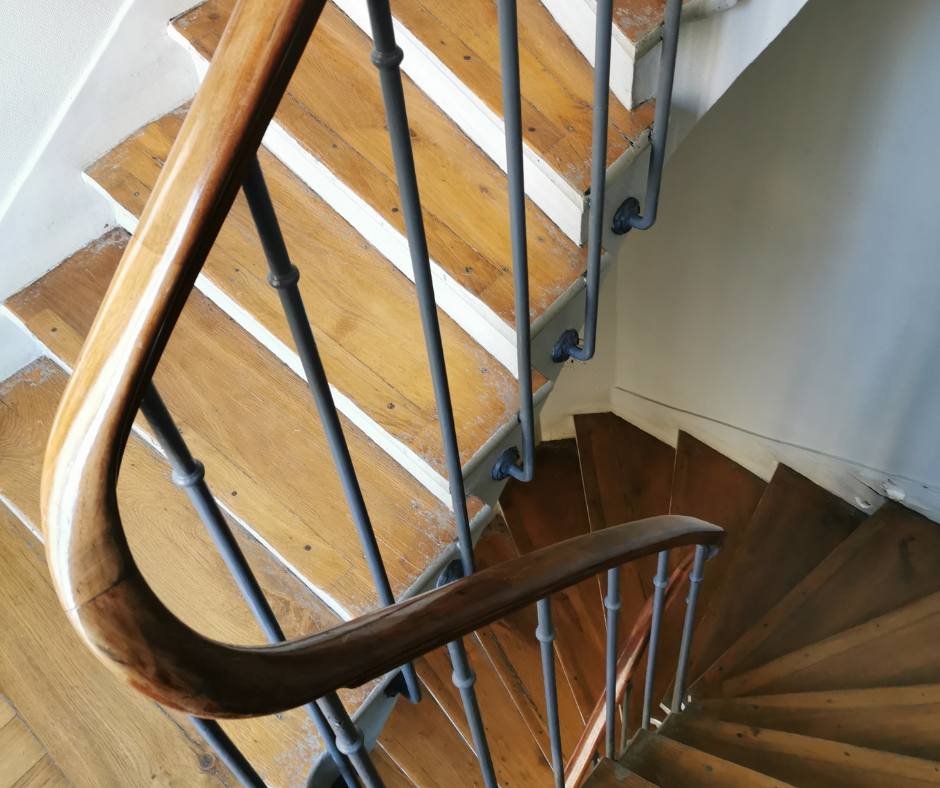Curved nose rubber stair treads are a great way to keep your curved staircase safe and looking sharp.
They fit the curve of your stairs perfectly.
This means you can worry less about anyone slipping.
Plus, they give your home a modern vibe that’s hard to beat.
If you like the idea of a little extra comfort, you can change course and opt for carpet stair treads instead.
Carpet stair treads create a much cozier and stylish feel.
But, lets jump back into rubber treads. Because we know that's why you're here.
Making Curved Staircases Safer with Rubber Stair Treads
Curved staircases can be a real showstopper in your home.
But they can also be a bit tricky when it comes to safety.
That’s where curved nose rubber stair treads come in handy.
They’re designed to match the curves of your stairs.
This helps you avoid those “oops!” moments when someone’s foot slips.
With so many designs to choose from, you can pick something that not only keeps you safe but also looks great in your space.
What You Need to Know About Curved Stair Tread Codes
When putting rubber treads on your curved stairs, you’ve got to play by the rules.
Building codes are the rulebook for your home.
They tell you how deep each step should be and how high the risers can go.
For curved stairs, there might be extra rules to make sure everything lines up just right.
Following these guidelines is like making sure your car’s brakes work before you hit the road—it’s all about keeping everyone safe.
What Does It Cost to Install Rubber Stair Treads?
So, how much will it cost to get these rubber stair treads installed?
Well, that depends on a few things, like how complicated your staircase is and where you live.
Generally, you’re looking at about $5 to $15 per step.
But, because curved stairs are a bit more of a challenge, the price might be a little higher.
On average, you could spend somewhere between $150 and $450 just for labor.
It’s always a good idea to get a few quotes, so you know you’re getting a fair deal.
Picking the Best Stair Nosing
When it comes to stair nosing—the part that sticks out at the edge of each step—you want something that does the job right.
For curved stair treads, a rounded or bullnose design is usually the best bet.
It fits the curve of the steps nicely and gives you a solid edge to step on.
It’s like finding the right shoes—you want something that looks good and feels secure.
Curved Oak Stair Treads vs. Curved Carpet Stair Treads
If you’re torn between curved oak stair treads and curved carpet stair treads, think about what fits your lifestyle.
Curved oak stair treads are classic and classy.
They’re perfect for a more traditional look.
They last a long time but can be a bit slippery unless you add something like rubber treads on top.
On the other hand, curved carpet stair treads are softer underfoot.
This is great if you’ve got kids or older folks running around.
They add warmth and come in lots of colors and patterns.
Just keep in mind that carpet needs more upkeep, like regular cleaning and replacing when it wears out.
Stepping Up
Curved nose rubber stair treads are a smart and stylish pick for your curved staircase.
They help keep everyone safe without sacrificing how your stairs look.
By knowing the costs, following the codes, and choosing the right stair nosing, you’re setting yourself up for a staircase that’s both practical and pleasing to the eye.



